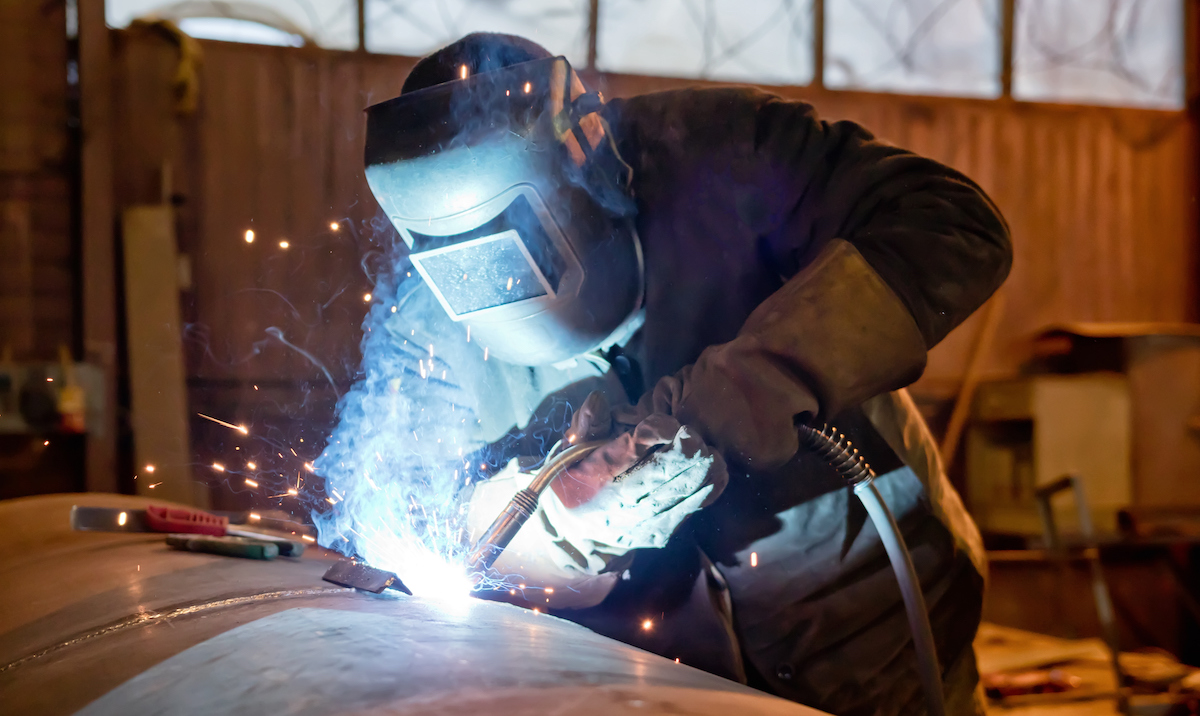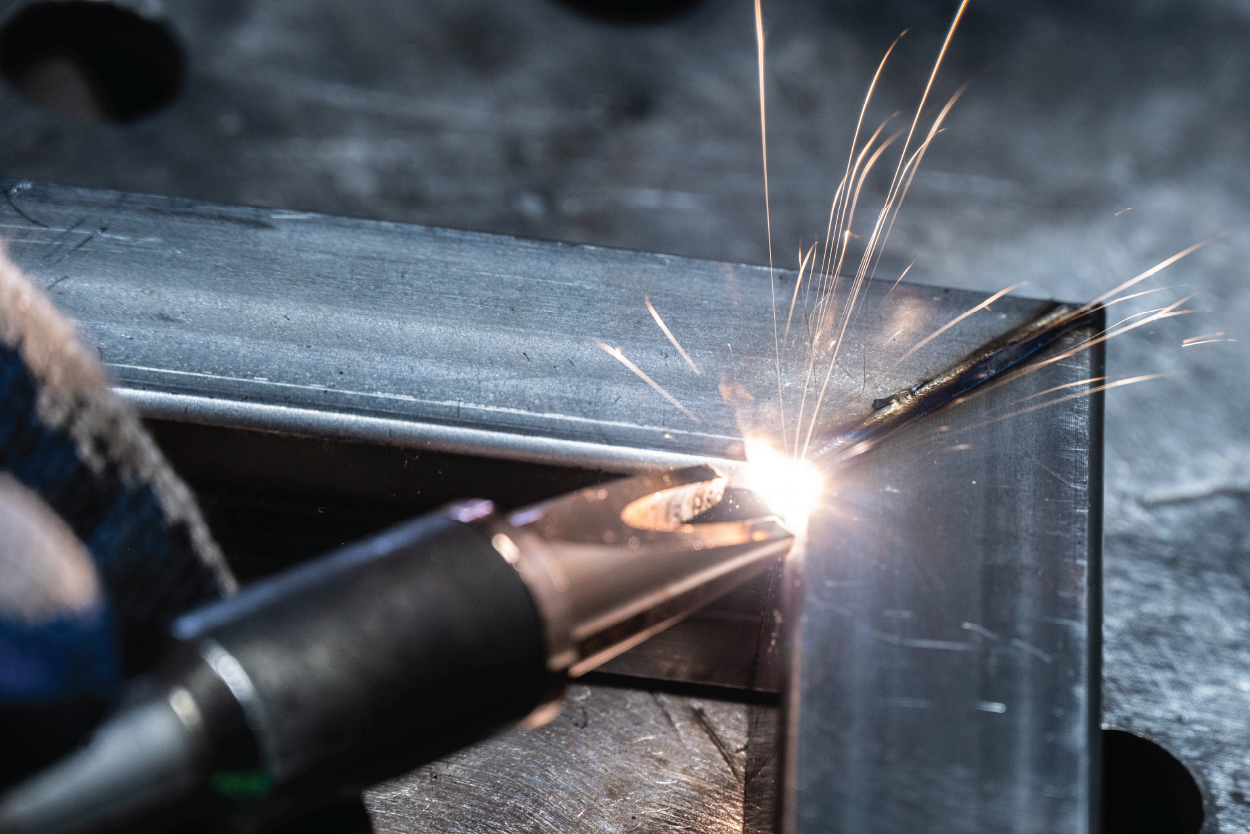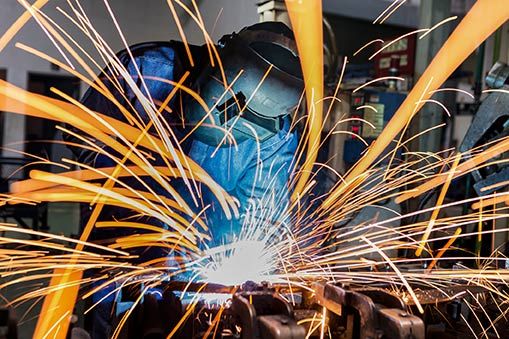Common Welding Repair Issues and How to Address Them Properly
Welding repair services commonly experience a series of concerns that can threaten the stability of the end product. Usual problems include insufficient infiltration, porosity, and imbalance, to name a few. Each issue provides special obstacles that call for particular strategies for resolution. Recognizing these problems is necessary for welders intending to boost their skills and end results. This discussion will certainly discover these common welding repair service concerns and effective methods to address them.
Poor Penetration
Inadequate infiltration takes place when the weld steel falls short to completely fuse with the base material, leading to weak joints and potential architectural failings. This issue frequently comes from insufficient heat input, incorrect electrode angle, or improper welding speed. Welders may encounter insufficient penetration due to a miscalculation of the needed criteria for a details material thickness or kind. Additionally, contamination on the base product's surface can prevent reliable bonding, intensifying the trouble. To address inadequate penetration, welders need to guarantee appropriate setups on their equipment and preserve a clean work surface. Normal inspection of welds is advised to determine any deficiencies early, permitting timely improvements and the prevention of jeopardized architectural honesty in welded settings up.
Porosity
Porosity is a typical problem in bonded joints that shows up as tiny gas bubbles trapped within the weld metal. This problem can endanger the stability of the weld, causing minimized toughness and possible failing under stress. Fabrication. Porosity typically develops from contamination, moisture, or inappropriate welding techniques, which permit gases to get away into the molten weld swimming pool. To address porosity, welders need to assure proper surface prep work, preserve a tidy functioning setting, and make use of ideal welding parameters. Additionally, picking the ideal filler product and protecting gas can reduce gas entrapment. Regular examination and screening of welds can assist recognize porosity early, ensuring prompt rehabilitative activities are taken, therefore preserving the high quality and dependability of the welded structure
Imbalance
Imbalance in welding can arise from different aspects, including incorrect configuration and thermal development. Comprehending the root creates is important for efficient resolution. A number of improvement strategies are offered to realign elements and assure structural integrity.
Reasons for Imbalance
Welding misalignment frequently stems from a range of underlying concerns that can endanger architectural stability. One primary reason is improper fit-up of parts prior to welding, which can lead to spaces and uneven surface areas. Variations in thermal growth during the welding procedure can also lead to distortion, particularly if the materials being joined have different coefficients of expansion. Furthermore, insufficient fixturing and securing may stop working to hold components securely in position, leading to motion during welding. Badly conserved devices, including welding makers and devices, may introduce inconsistencies in the weld bead, further adding to imbalance. Operator mistake, stemming from not enough training or experience, can also play a significant role in creating misaligned welds.

Modification Methods Readily Available
Dealing with misalignment efficiently requires a combination of rehabilitative methods tailored to the specific concerns handy. One typical technique is using jigs or fixtures to hold components in the right setting throughout welding, making sure constant alignment. Additionally, preheating the products can help in reducing distortion and improve fit-up. For substantial imbalance, mechanical realignment techniques, such as using hydraulic jacks or clamps, can be utilized to correct the setting before welding. Post-weld heat treatment may likewise be essential to eliminate stresses created by misalignment. Mindful assessment and modification throughout the setup phase can avoid imbalance problems from becoming substantial issues, advertising a smoother welding procedure and improving total architectural stability.
Distortion
Distortion is a common difficulty in welding that can emerge from numerous variables, including unequal home heating and cooling. Understanding the reasons for distortion is vital for implementing effective avoidance strategies. Addressing this problem not just boosts structural honesty but also enhances the total quality of the weld.
Causes of Distortion
When subjected to the intense warm of welding, products typically undertake adjustments that can bring about distortion. This phenomenon primarily occurs from thermal growth and tightening during the welding procedure. As the weld location warms up, the product expands; upon air conditioning, it gets, which can produce inner stresses. Additionally, irregular home heating throughout a workpiece can aggravate these stress and anxieties, resulting in bending or bending. The kind of material likewise plays a considerable function; metals with varying thermal conductivity and coefficients of expansion may react differently, bring about unforeseeable distortions. Furthermore, bad joint design and insufficient fixturing can add to imbalance during welding, raising the probability of distortion. Comprehending these causes is necessary for effective welding repair service and avoidance strategies.
Prevention Techniques
Reliable avoidance methods for distortion during welding concentrate on regulating warm input and ensuring appropriate joint style. Keeping a regular warm input assists to minimize thermal growth and contraction, which can bring about distortion. Using techniques such as pre-heating the workpiece can additionally minimize the temperature gradient, advertising uniform home heating. Additionally, picking suitable joint layouts, such as T-joints or lap joints, can boost security and decrease stress and anxiety concentrations. Applying correct fixturing to safeguard the work surfaces in position even more help in keeping positioning throughout the welding procedure. Finally, staggered welding sequences can disperse heat more uniformly, avoiding localized distortion. By using these methods, welders can substantially lower the probability of distortion and improve the overall top quality of their welds.
Splitting
Breaking is a common concern experienced in welding repairs, often resulting from numerous factors such as inappropriate cooling prices, material choice, or insufficient joint preparation. The incident of fractures can substantially endanger the stability of the weld, causing prospective failures throughout procedure. To address this problem, welders need to first evaluate the origin causes, guaranteeing that materials work and suitably chosen for the specific application. In addition, managing the cooling rate throughout the welding process is necessary; fast cooling can cause stress and lead to breaking. Correct joint layout and prep work likewise add to click this site reducing the danger. Carrying out these methods can boost weld high quality and durability, ultimately lowering the chance of splitting in ended up weldments.

Incomplete Fusion
A substantial concern in welding fixings is insufficient fusion, which takes place when the weld metal does not properly bond with the base material or previous weld passes - Fabrication. This flaw can result in weak points in the joint, possibly endangering the stability of the bonded framework. Variables adding to insufficient combination include inadequate heat input, improper welding method, and contamination of the surface areas being signed up with. To address this concern efficiently, welders should assure appropriate pre-weld cleansing and surface area prep work, as well as change their welding criteria to achieve ample infiltration and fusion. Regular evaluation during the welding process can also help identify incomplete combination early, enabling prompt corrective procedures to boost the overall quality of the weld
Overheating
While welding fixings can boost architectural stability, overheating presents a substantial difficulty that can result in material deterioration. Extreme heat during welding can modify the mechanical residential or commercial properties of metals, leading to minimized strength, increased brittleness, and warping. This phenomenon is specifically vital in high-stress applications where structural reliability is critical. Recognizing getting too hot visite site can include aesthetic evaluations for discoloration or distortion, in addition to checking temperature level during the welding process. To mitigate the dangers associated with overheating, welders ought to utilize ideal methods, such as regulating warm input, adjusting travel speed, and using appropriate filler products. Furthermore, carrying out pre- and post-weld warm treatments can aid recover material homes and boost the general top quality of the repair work, guaranteeing long-term performance and safety.
Often Asked Concerns
What Are the Typical Indications of a Welding Defect?

Just How Can I Examine My Welds for Quality?
To evaluate welds for top quality, one can utilize visual examinations, ultrasonic testing, and radiographic methods. Each technique assures structural integrity, recognizes defects, and confirms adherence to specified standards, inevitably boosting the reliability of the welding services near me welded joints.
What Safety and security Safety Measures Should I Take While Welding?
When welding, one must prioritize safety by wearing ideal individual safety devices, ensuring appropriate ventilation, securing flammable materials away, maintaining a tidy office, and knowing environments to avoid injuries and accidents.
Can I Fix a Weld Without Redoing the Entire Joint?
Repairing a weld without renovating the entire joint is feasible, relying on the damage (Belgrade Welding). Methods such as grinding, adding filler material, or using a welding process can properly attend to particular flaws while protecting the bordering structure
What Devices Are Necessary for Reliable Welding Repairs?
Crucial devices for effective welding repairs include a welding maker, wire brush, grinder, safety equipment, clamps, and filler materials. Each tool plays an essential duty in making certain high quality and safety throughout the repair service process. Porosity usually arises from contamination, wetness, or improper welding strategies, which permit gases to escape into the molten weld swimming pool. Inadequately maintained devices, including welding makers and tools, might introduce inconsistencies in the weld grain, further contributing to misalignment. When subjected to the extreme warmth of welding, products usually go through modifications that can lead to distortion. Splitting is an usual issue experienced in welding fixings, usually resulting from various variables such as incorrect cooling prices, product choice, or inadequate joint preparation. A considerable concern in welding repair work is insufficient fusion, which takes place when the weld steel does not effectively bond with the base product or previous weld passes.